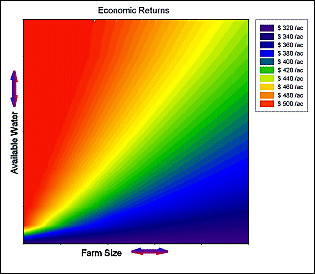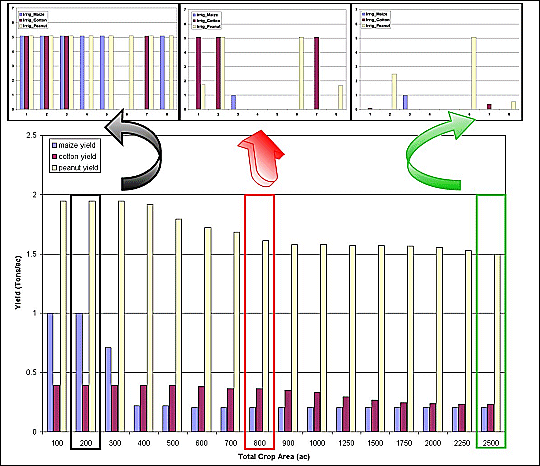
Algorithms
 |
Agricultural production in the southeast US is highly vulnerable to natural climate variability in terms of both rainfall and temperature extremes. Although the Southeast receives a significant amount of precipitation and has an extensive system of water supply projects, water demand is beginning to exceed the available supply because of increases in population, urbanization, agricultural uses, and maintenance of stream quality. Therefore it becomes critically important to allocate optimal quantities of water to competing crops in order to maximize the returns from the crop. We have assessed the relative value of irrigation water for three important crops (corn, cotton, and peanuts) grown in the southeastern US. We have developed a decision tool with the objective of allocating limited available water among competing crops in a manner that would maximize the economic returns to the producers. Crop yield – soil moisture response functions were developed using Monte Carlo simulated data for cotton, corn, and peanuts. An economic optimization model was employed with the crop responses, and soil moisture functions to determine the optimum amount of water to place on each crop subject to the amount of irrigation water availability. Figure 1 shows the relationship of economic returns with available irrigation water in relation to farm sizes. As seen in Figure 2, even small amounts of irrigation could increase the net returns for a farmer by as much as 20-25%.
For further details,







